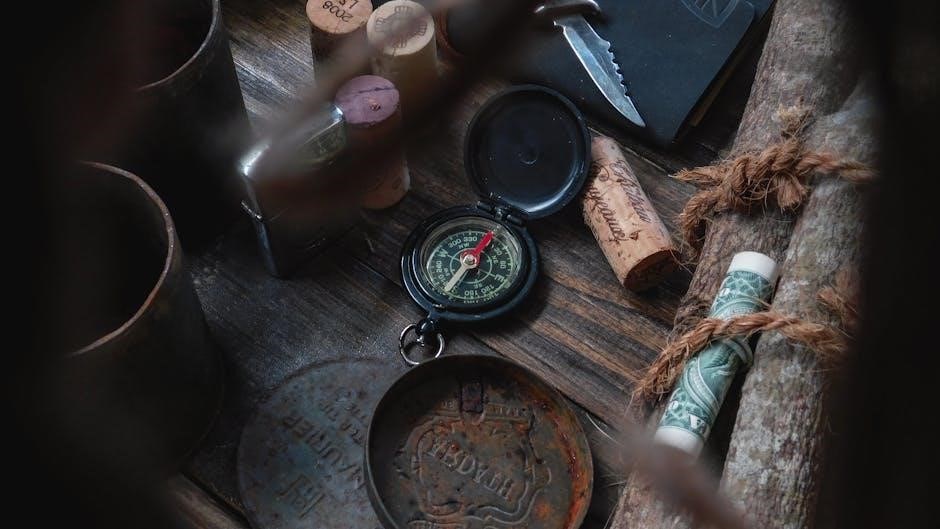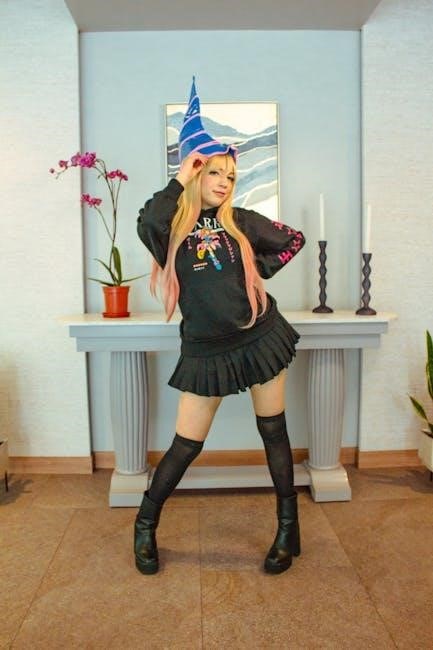Blood Guide Manga: A Comprehensive Overview (Updated November 25, 2025)
Blood Guide Manga encompasses a complex series, including manga, light novels, and anime adaptations, revolving around individuals with unique abilities and the intricate relationships between them.
The series, starting with Blood: The Last Vampire, explores themes of protection, sacrifice, and the burden of power, captivating fans with its dark fantasy elements and compelling characters.
Online communities actively discuss the series, creating fan content like Phonk and montage videos, demonstrating a dedicated and passionate fanbase for this unique universe.
What is “Blood Guide Manga”?
Blood Guide Manga represents a multifaceted franchise originating from the 1993 light novel, Blood: The Last Vampire, by Junji Ito. It has since expanded into a series of manga, anime adaptations, and further light novels, all interconnected by a core premise.
At its heart, the series centers around “Guides” – individuals possessing the ability to protect and guide “Espers,” humans with extraordinary psychic powers. These Espers are vulnerable to “Rampages,” uncontrolled outbursts of their abilities that can be devastating. Guides act as anchors, preventing these dangerous occurrences.
The manga, particularly works like Blood Adagio and the ongoing Tougen Anki: Legend of the Cursed Blood, delve into the intricacies of this guiding system, exploring the sacrifices and burdens placed upon both Guides and Espers. The narrative often features complex relationships, dark secrets, and supernatural battles, establishing a unique blend of action, fantasy, and psychological drama.
The Core Concept: Guides and Blood Manipulation
The fundamental concept underpinning Blood Guide Manga revolves around the symbiotic, yet often fraught, relationship between Guides and Espers. Guides, like Heo Yoonjae, possess a unique ability to suppress the dangerous “Rampages” experienced by Espers – individuals with potent psychic powers.
Crucially, the series features a distinctive form of combat and ability manifestation: blood manipulation. Espers can transform their blood into various weapons and tools, reflecting their individual powers and fighting styles. This ability, however, is directly linked to the risk of Rampages, necessitating the presence of a Guide.
The guiding process isn’t merely suppression; it’s a complex connection that demands sacrifice and understanding. The series explores the mechanics of this system, the limitations of both Guides and Espers, and the consequences of a broken connection, often leading to tragic outcomes.
Key Themes Explored in the Series
Blood Guide Manga delves into several profound themes, most prominently the weight of responsibility and the sacrifices demanded by power. Guides bear the immense burden of protecting Espers, often at great personal cost, grappling with moral dilemmas and the potential for failure.
The series also examines complex relationships, particularly those built on necessity and trust, like the dynamic between Guides and those they protect. These bonds are frequently tested by external forces and internal conflicts, exploring themes of loyalty, betrayal, and the search for genuine connection.
Furthermore, the narrative investigates the consequences of unchecked power and the dangers of isolation. The exploration of trauma, loss, and the struggle for self-discovery are woven throughout the storyline, adding layers of emotional depth to the supernatural action.
Major Series and Related Works
Blood Guide Manga expands across multiple iterations, including Blood: The Last Vampire, Blood Adagio, the Blood+ anime, and Tougen Anki: Legend of the Cursed Blood.
Blood: The Last Vampire ⎻ The Origin Point
Blood: The Last Vampire, initially a 1993 OVA and later a 2005 film, serves as the foundational work for the entire Blood Guide Manga universe. This installment introduces the core concept of humans with unique abilities, known as Espers, and the enigmatic figures called Guides who protect them.
The story centers on Saya Otonashi, a centuries-old vampire tasked with hunting down other vampires, specifically those who prey on humans. This initial work establishes the complex lore surrounding the Chiroptera, the ancient vampire species, and their vulnerability to specific weapons and techniques.
While not a traditional manga in its original form, the 2002 manga adaptation by Production I.G further solidified the narrative and character designs, laying the groundwork for subsequent series like Blood Adagio and Blood+. It’s a crucial starting point for understanding the overarching mythology and the roles of Guides and Espers.
Blood Adagio: Expanding the Universe
Blood Adagio, a six-volume manga series, directly expands upon the world established in Blood: The Last Vampire, delving deeper into the history and mechanics of the Guiding system. Authored by Bicheon, this series introduces Heo Yoonjae, a former Guide grappling with the trauma of losing his previous Esper to a devastating rampage.
The narrative follows Yoonjae’s reluctant return to the field, tasked with protecting a new Esper, and explores the psychological toll on both Guides and those they safeguard. Blood Adagio significantly develops the concept of Esper abilities, showcasing a wider range of powers and the dangers associated with their uncontrolled manifestation.
It also begins to unravel the mysteries surrounding the origins of the Chiroptera and the ancient conflicts that shape the present-day world, setting the stage for the more expansive storyline found in Blood+.
Blood+ : A Significant Anime Adaptation (2005)

Blood+, a 54-episode anime series released in 2005, represents a substantial adaptation and reimagining of the Blood universe, building upon the foundations laid by Blood: The Last Vampire and Blood Adagio. While retaining core elements like the existence of Chiroptera and the role of Guides and Espers, Blood+ presents a largely original storyline centered around Saya Kisaragi.
The anime follows Saya’s journey as she awakens as a powerful Esper and becomes entangled in a centuries-old conflict against the Chiroptera, uncovering secrets about her past and her unique abilities. Blood+ significantly expands the lore, introducing new characters, organizations, and a more detailed explanation of the scientific and mystical aspects of the world.
It’s known for its action sequences, emotional depth, and exploration of themes like identity, sacrifice, and the search for meaning.
Tougen Anki: Legend of the Cursed Blood ⎯ A Related Series

Tougen Anki: Legend of the Cursed Blood, while often considered a separate entity, shares thematic and conceptual links with the broader Blood universe, offering a distinct yet complementary experience for fans. This series delves into a historical setting, focusing on warriors battling against Oni – creatures capable of manipulating their own blood for combat.
The manga explores the concept of cursed bloodlines and the struggles of individuals burdened with extraordinary power. Critical analysis highlights the series’ intricate fight choreography and its exploration of Japanese folklore. However, it’s also noted for a potentially confusing narrative and a complex lore establishment.
Despite its differences, Tougen Anki resonates with the core themes of sacrifice, destiny, and the weight of responsibility present throughout the Blood franchise.
Characters and Their Abilities
Blood Guide Manga features a diverse cast, including Guides like Heo Yoonjae, Espers with unique powers, and enigmatic figures like Fabian and Al, each possessing distinct abilities.

Heo Yoonjae: The Reluctant Guide
Heo Yoonjae is a central figure in Blood Guide Manga, initially a seasoned Guide burdened by a past trauma – the loss of his previous Esper to a devastating rampage. This experience leads him to seek retirement from active duty, hoping to escape the constant danger and emotional toll.
However, fate intervenes, drawing him back into the world of guiding and protection during a trip to the Guiding Agency. Yoonjae’s abilities as a Guide are considerable, allowing him to connect with and safeguard Espers, but his reluctance stems from the immense responsibility and the potential for further loss.
He grapples with internal conflict, questioning his worthiness and ability to prevent future tragedies, making him a compelling and relatable character despite his extraordinary skills. His journey explores the psychological impact of being a Guide and the sacrifices required to protect others.
Fabian: A Central Figure and His Struggles
Fabian stands as a pivotal character within the Blood Guide Manga universe, frequently positioned as a target and a figure of intense interest due to his unique nature and inherent power. The narrative often revolves around protecting him, highlighting his vulnerability despite his strength.
His story is marked by complex relationships and constant threats, particularly concerning those who desire to exploit his abilities or claim him for their own purposes. A central question explored is whether Fabian can defend himself against a Guide motivated by both physical and possessive desires.
Fabian’s internal struggles and the external forces vying for control create a compelling dynamic, making him a focal point of the series’ overarching conflicts and a symbol of the sacrifices inherent in wielding great power.
Kaname: Complex Relationships and Lore

Kaname is a character shrouded in mystery within the Blood Guide Manga, deeply intertwined with the series’ intricate lore and possessing relationships that are often unsettling and morally ambiguous. His connection to Al, specifically the fact that Kaname raised him, is a source of significant discomfort and narrative tension.
The series deliberately complicates Kaname’s motivations and past, leaving much open to interpretation and fueling ongoing discussions among fans. His actions and allegiances are rarely straightforward, contributing to the overall sense of unease and uncertainty that permeates the story.
Kaname’s role is crucial in establishing the deeper mythology of the world, and his presence consistently challenges the reader’s perceptions of good and evil within the narrative.
Al: The Enigmatic Character and His Origins
Al stands as one of the most enigmatic figures in the Blood Guide Manga universe, his origins and true nature consistently veiled in secrecy. The series deliberately withholds information about his past, creating a compelling air of mystery surrounding his character and motivations.
His upbringing under Kaname is a particularly disturbing element of his backstory, raising questions about manipulation, control, and the ethical boundaries of power. This complex relationship forms a central pillar of Al’s character arc and drives much of the narrative tension.
Fans speculate extensively about Al’s ultimate goals and allegiances, making him a constant subject of discussion and analysis within the online community.
Plot and Story Arcs
The Blood Guide Manga plot centers on the Guiding System, Esper abilities, and frequent rampages, all while navigating a confusing timeline and establishing complex lore.
The Guiding System and its Mechanics
The core of the Blood Guide Manga narrative revolves around the Guiding System, a crucial framework for protecting individuals known as Espers. These Espers possess extraordinary abilities, but are vulnerable to destructive rampages when their power spirals out of control.
Guides, like Heo Yoonjae, are tasked with safeguarding these Espers, utilizing their own unique skills to suppress and manage the Esper’s abilities. The system isn’t simply about power suppression; it’s a complex relationship built on trust and understanding, requiring Guides to intimately know those they protect.
The mechanics involve a deep connection between Guide and Esper, often manifesting as a shared mental space; A Guide’s effectiveness hinges on their ability to anticipate and counteract an Esper’s potential for rampage, making it a high-stakes profession with significant personal risk.
Esper Abilities and Rampages
Within the Blood Guide Manga universe, Espers exhibit a diverse range of extraordinary abilities, often manifesting as the manipulation of their own blood into various weapons and forms. These powers, while potent, are inherently unstable and prone to triggering devastating rampages.
A rampage occurs when an Esper loses control of their abilities, resulting in widespread destruction and potential harm to themselves and others. The cause can vary, stemming from emotional distress, overwhelming power, or external influences.
The severity of a rampage is directly proportional to the Esper’s power level, making high-level Espers particularly dangerous when unchecked. Guides play a critical role in preventing these events, utilizing their skills to suppress and stabilize the Esper’s volatile abilities before they escalate.
Confusing Timelines and Lore Establishment
The Blood Guide Manga series is notorious for its complex and often convoluted timelines, presenting a significant challenge for newcomers and long-time fans alike; The narrative frequently jumps between different eras and perspectives, obscuring the overall chronological order of events.
Establishing the lore proves equally problematic, with crucial details revealed piecemeal across various installments – manga, light novels, and anime adaptations. This fragmented approach leads to ambiguity and necessitates careful attention to detail to piece together the complete picture.
The series attempts to establish a rich history involving Oni, Guides, and Espers, but the execution sometimes feels rushed or underdeveloped, leaving gaps in understanding. Despite these issues, the intricate world-building remains a core appeal for dedicated followers.
The Relationship Between Guides and Those They Protect
At the heart of Blood Guide Manga lies the symbiotic, yet often fraught, relationship between Guides and the Espers they are tasked with protecting. Guides, like Heo Yoonjae, possess the ability to manage and mitigate the dangerous “rampages” experienced by Espers – individuals with extraordinary, but unstable, powers.
This connection isn’t merely supervisory; it’s deeply personal and often involves a significant emotional investment. The Guides bear the responsibility for their Espers’ well-being, frequently placing themselves in harm’s way. However, the dynamic can be complicated by desire, as seen with Fabian, and the potential for exploitation.

The series explores the ethical implications of this power imbalance, questioning the boundaries of protection and the sacrifices made in the name of control. It’s a relationship built on necessity, trust, and a constant undercurrent of danger.
Reviews and Critical Reception
Blood Guide Manga receives varied reviews, praised for its compelling characters and dark themes, but criticized for confusing timelines and lore. Critical analysis highlights both strengths and weaknesses.
Manga Review: Blood Adds Heart to Vampire Slaying
Blood Guide Manga, particularly the original Blood: The Last Vampire manga, distinguishes itself within the vampire genre by infusing action with genuine emotional depth. The narrative transcends typical monster-slaying tropes, focusing on the complex relationships and sacrifices inherent in the guiding system.
Reviewers consistently commend the manga’s atmospheric artwork and its ability to create a sense of dread and mystery. The story doesn’t shy away from mature themes, exploring the psychological toll on both the guides and those they protect. While the initial volume is concise, it effectively establishes the core concepts and introduces compelling characters like Heo Yoonjae and Fabian.
The manga’s strength lies in its ability to humanize even its monstrous elements, prompting readers to question conventional notions of good and evil. It’s a captivating read that blends supernatural action with poignant character studies, earning it a positive reception among manga enthusiasts.
Critical Analysis of Tougen Anki: Legend of the Cursed Blood
Tougen Anki: Legend of the Cursed Blood, a related series within the Blood Guide Manga universe, presents a fascinating, though sometimes convoluted, exploration of oni and blood manipulation. Critics note the series’ impressive action sequences, showcasing the unique fighting styles enabled by transforming blood into weaponry.
However, the narrative frequently suffers from a confusing timeline and a dense lore that can be challenging for newcomers to grasp. The relationship between characters, particularly the complex dynamic involving Kaname and Al, is often a point of discussion, with some finding it compelling and others deeming it problematic.
Despite these flaws, Tougen Anki offers a compelling look into the broader world established by Blood, expanding upon the themes of power, destiny, and the consequences of unchecked abilities. It’s a series that rewards patient readers willing to unravel its intricacies.

Common Criticisms and Praises
The Blood Guide Manga series garners both significant praise and recurring criticisms from its dedicated fanbase. Many commend the series for its compelling characters, particularly Heo Yoonjae and Fabian, and the emotionally resonant relationships they forge. The unique concept of “Guides” and their protective roles is consistently lauded as a strong narrative foundation.
However, a frequent criticism centers on the often-confusing timelines and the dense, sometimes haphazardly revealed, lore. Some readers find the world-building overwhelming and difficult to follow, hindering their enjoyment. The mature themes and explicit content also aren’t for every audience, leading to mixed reactions.

Despite these issues, the series’ ability to blend action, fantasy, and emotional depth continues to attract and retain a devoted following, solidifying its place within the vampire manga genre.

Reading Order and Volume Breakdown
To fully experience the Blood Guide Manga, begin with Blood: The Last Vampire (2002), followed by Blood Adagio, then explore the six-volume manga and four light novels.
Recommended Reading Order for the Blood Series
Navigating the Blood series can be tricky due to its varied formats – manga, light novels, and anime. The optimal starting point is undoubtedly Blood: The Last Vampire (2002), the foundational work that establishes the core concepts and lore. Following this, delve into Blood Adagio, which expands upon the universe and introduces key elements.

Subsequently, proceed with the main manga series, consisting of six volumes. It’s crucial to read these in chronological order to fully grasp the unfolding narrative and character development. After completing the manga, the four light novels offer further insights and details, enriching the overall experience. While the 2005 anime, Blood+, is a significant adaptation, it’s best enjoyed after experiencing the original source material for a deeper appreciation of its divergences and interpretations.
Volume 1 Review and Summary
Blood Guide Manga’s Volume 1 immediately plunges readers into a world of Espers, Guides, and the constant threat of rampages. The story centers on Heo Yoonjae, a former Guide haunted by a past tragedy – the loss of his Esper. Reluctantly drawn back into the field, he’s tasked with protecting a new, powerful Esper.
The volume excels at establishing the core mechanics of the Guiding system and the dangers inherent in Esper abilities. We’re introduced to the complex dynamic between Guides and those they protect, hinting at the sacrifices and burdens both roles entail. The artwork effectively conveys the intensity of combat and the emotional weight of the narrative. While the initial pacing is deliberate, it’s essential for world-building and character introduction, laying a solid foundation for the series’ unfolding mysteries.
Volume 2 Review and Summary
Blood Guide Manga’s Volume 2 deepens the exploration of the relationship between Heo Yoonjae and his newly assigned Esper, while simultaneously expanding upon the lore surrounding rampages and the origins of Esper abilities. The volume introduces new characters, subtly hinting at larger conspiracies and the shadowy forces at play within the world.
The narrative skillfully builds tension, showcasing the challenges Yoonjae faces in understanding and controlling his Esper’s power. The artwork continues to impress, particularly during action sequences, vividly illustrating the destructive potential of unleashed abilities. Volume 2 begins to unravel some of the mysteries established in the first volume, though it also introduces new questions, leaving readers eager to discover the truth behind the series’ complex mythology. It’s a compelling continuation that solidifies the manga’s captivating blend of action and intrigue.
Volumes 3-7: A Quick Overview (Timestamped Review)
Blood Guide Manga’s Volumes 3 through 7 significantly escalate the stakes, delving deeper into the confusing timelines and the established lore surrounding the Guides and Espers. Volume 3 (00:02:49) introduces pivotal backstory, while Volume 4 (00:03:18) focuses on character development, particularly Fabian’s internal struggles.
Volume 5 (00:03:54) marks a turning point with a major plot twist, and Volume 6 (00:04:32) showcases intense action sequences as rampages become more frequent and devastating. The series grapples with uncomfortable themes, like Kaname and Al’s relationship. Volume 7 (00:05:03) builds towards a climactic confrontation, leaving several threads unresolved. These volumes are characterized by increasingly complex narratives and a growing sense of urgency, solidifying the manga’s reputation for its intricate world-building and compelling characters.
Fan Content and Online Presence
Blood Guide Manga inspires vibrant fan creations, including Phonk and montage videos, showcasing dedicated community engagement and a thriving online presence across forums.
Phonk and Montage Videos Inspired by the Manga
The dark and atmospheric aesthetic of Blood Guide Manga has profoundly influenced a surge of fan-made content, particularly within the Phonk music and montage video communities online. These videos, often utilizing snippets of the manga’s artwork and dramatic scenes, are set to the driving beats of Phonk – a subgenre of trap music known for its distorted bass and vintage samples.
Creators skillfully synchronize the visuals with the music, emphasizing the series’ intense action sequences and emotional moments. Examples like “Phonk DOXEADO ⎯ ️(Lanas versión)” and “MONTAGEM CORAL 1.0 ⎻ HES BACKKK! ⎯ SHADXWLXRD” demonstrate the creative energy and dedication of fans. These montages aren’t merely compilations; they’re reinterpretations of the narrative, often focusing on specific characters like Fabian or highlighting the series’ overall themes of struggle and destiny. The popularity of these videos further expands the manga’s reach, attracting new audiences and fostering a sense of community.
Online Discussions and Community Forums
Blood Guide Manga boasts a dedicated and active online community, primarily congregating on various forums and social media platforms to dissect the complex lore, character motivations, and intricate plotlines. Discussions frequently revolve around the confusing timelines, the nature of the guiding system, and the relationships between key figures like Heo Yoonjae, Fabian, and Kaname.
Fans actively theorize about unanswered questions, share fan art and fanfiction, and debate the merits of different adaptations, including the 2005 anime, Blood+. These online spaces serve as vital hubs for sharing information, analyzing subtle details, and fostering a deeper appreciation for the series’ nuances. The community’s enthusiasm is evident in their detailed analyses and passionate debates, ensuring the legacy of Blood Guide Manga continues to thrive.
